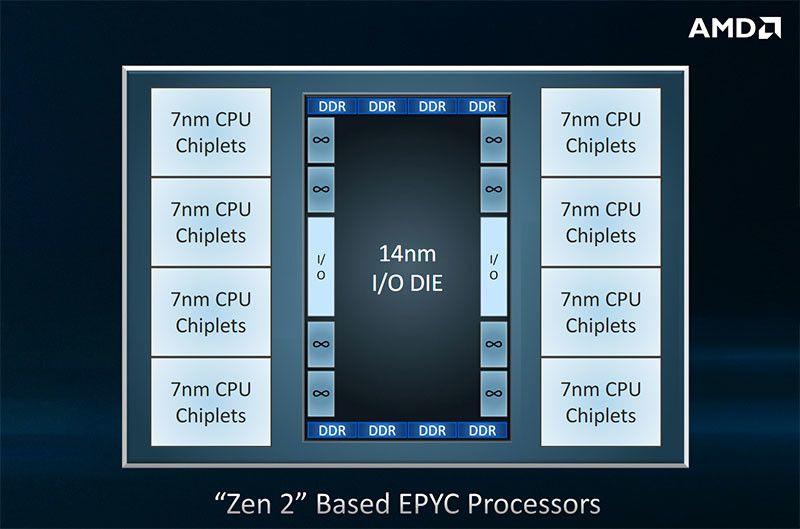In the next year and a half, the Finnish IT Centre for Science (CSC) will buy a new supercomputer in two phases. In the second phase with the BullSequana XH2000 cluster, the CSC will use the 7 nm ‘Rome’ EPYC chips, which together will produce up to 200,000 cores.
Finnish supercomputer equips 3,125 7nm EPYC processors for a total of 200,000 cores
The first phase of this supercomputer would begin in summer 2019 with a first BullSequana X400 cluster using Intel (Cascade Lake) chips together with Mellanox HDR InfiniBand for a theoretical performance of 2 petaflops. In the meantime, the system memory per node will be between 96 GB and 1.5 TB, and the entire system will receive a parallel file system with 4.9 PB chandeliers and DDN. In addition, a separate phase one partition will be used for AI research and has 320 NVIDIA V100 NVLinked GPUs configured on 4 graphics nodes. The maximum performance is expected to reach 2.5 petaflops.
It becomes interesting in phase two, which is to be completed in spring 2020. Atos will build a liquid-cooled BullSequana XH2000 supercomputer with HDR connection, configured with 200,000 AMD EPYC “Rome” CPU cores, corresponding to 3,125 AMD EPYC 64 core processors.
Of course, all this x86 supercomputer requires a lot of system memory and each node will be equipped with 256 GB of volatile memory. The memory consists of an 8 PB Luster parallel file system provided by DDN. In general, the second phase will increase the computing capacity by 6.4 petaflops (peak). As such agreements have already been signed, it seems that AMD’s next-generation EPYC processors are developing very well, considering that Intel has been looking at this market for almost a decade.
